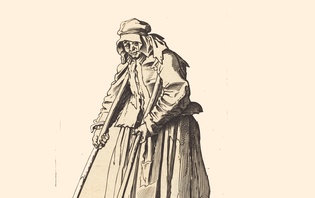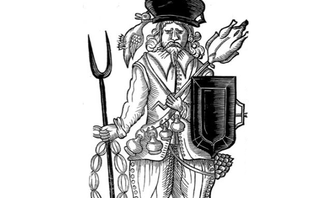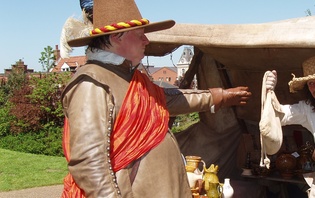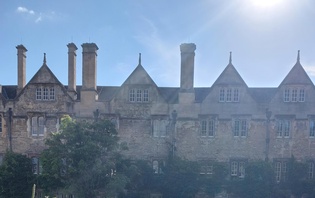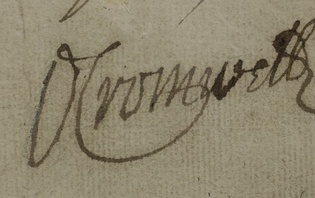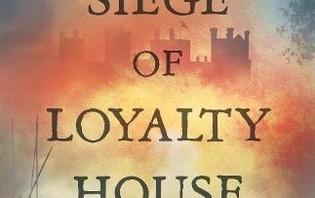Dead and buried? The fate of the Civil War battle-dead
In a previous blog, Andrew Hopper revealed the military and political uses of wounded survivors and prisoners of war from Civil War encounters, but what became of those of did not live to tell the tale of the fighting they had experienced? This week, Civil War Petitions welcomes a guest blog from Sarah Taylor, who uncovers the murky story surrounding the disposal of the dead…
Although military historians have, in recent years, increasingly turned to studying alternative aspects of battles other than just their tactics or wider political impact, one aspect that has still been largely ignored is what happened to the bodies of those killed in battle. On looking at the sources, it is not all that surprising that this topic has received so little attention. Most sources avoid the topic, while of those which do mention the disposal of the dead, many do so incidentally. Following the battle of Edgehill (23 October 1642), for example, one source writer claimed that the Royalists had ‘about 3000 of theirs slain’ as he had been ‘informed by the Countrie men that saw them burie the dead next day’ (Thomason Tracts E.124[32]). The writer’s interest was not in what had happened to the bodies but in how severe the opposition’s losses had been.
Quite a few of those sources which do refer to the disposal of the dead appear to do so because of a matter of honour (that is, someone had acted with particular honour or, more likely, with particular dishonour). Parliamentarians after the battle of Hopton Heath (19 March 1643), for example, tried to ransom the body of the Royalist commander back to his men in exchange for the prisoners and weapons that the Royalists had captured in the battle. One Royalist source describing the incident accused the Parliamentarians of ‘barbarisme and inhumanity’ and that their actions were ‘ignorant of what belonges to the honour of a souldier’ (D686/2/69). The commander’s own son was present and he, in a letter to his mother, sounded quite baffled when talking about this action which was ‘never before heard of in any warre’ (E.99[18]). Given the unusual and dishonourable nature of the incident, it is not at all surprising that source writers felt the need to mention it.
Another notable encounter was the first battle of Newbury (20 September 1643), where a Royalist source described how ‘severall heapes of [the Parliamentarian’s] dead were found cast into Wells, Ponds and Pits, one Draw-well of 30 fathoms deepe being filled to the top with dead bodies…and in sundry places with armes and legges sticking out besides those above ground whom [the Parliamentarians] had not time to cover’ (TT E.69[18]). One Parliamentarian source actually responded to these ‘wilde relations’, claiming that since they had fought close to a river a well would not even have existed in such a place, let alone that the Parliamentarians would throw their dead down it (TT E.250[17]). The very fact that the Parliamentarians felt the need to respond to the claim suggests that disposing of one’s dead in such a manner was not acceptable, and that the Royalists may have been trying to use the dead as propaganda, to slander the Parliamentarians and their reputation. It does seem unlikely that the Parliamentarians would have thrown their dead into a well, particularly as the Parliamentarian commander had already ordered the locals to finish burying his dead; while it seems unlikely that the Parliamentarians would have wanted to alienate the locals by blocking their water sources, since they were reliant on the people for support and resources, like food, men and equipment.
As for where the dead were buried, the sources are again very tight-lipped. A number of sources talk about high-status men being taken to churches for burial but because they say little about the rank-and-file, it is very difficult to judge if, and to what extent, those high-status men were being treated differently to the rest of the dead. It is clear that not all high-status men were buried in a church: letters by one man lament how he was unable to locate the body of his father, who had been the Royalist standard-bearer, after the battle of Edgehill so that he could take it for a church burial (Verney letters). The same letters noted how one lord ‘was like to have been buried in the fields, but that one came by chance that knew him and took him into a church, and there laid him in the ground’, highlighting how, sometimes, it was down to chance and one’s friends and family to find and remove a body for a church burial. If this was the case, then it seems quite likely that some common soldiers may also have received a church burial, particularly if they had friends or family nearby who were able to find their body and to convey it to a church.
This lack of information is very problematic. Clearly some of the dead were being buried in churches, but what about everyone else? There are a few historical sources that confirm that some of the dead were buried on or near the battlefield, such as the one above, which mentioned the dead being buried ‘in the fields’. A churchwarden’s account also records how some of the dead from the first battle of Newbury were buried on the battlefield, as well as in the churchyard. This suggests that some of the dead were buried on the battlefield, a picture that some of the archaeology would seem to support (although even much of this is shaky because it is so hard to explicitly link burials to a specific event). Burials have been reported on Naseby battlefield since near to the time of the battle, for example.
Overall, the evidence is very patchy: certainly some of the dead were buried in churches following a battle, while others seem to have been buried on the battlefield. It is not certain that both of these things occurred at all battles, though. The character or nature of a battle could certainly have had an impact. Much of the battle of Worcester (3 September 1651), for example, was fought within the town; while church records note that lots of those who were killed in the town were then buried in churches in the town, so the location of a battle may have had an impact on where the dead were buried. The numbers of bodies might also have had an impact. If there were lots of bodies, then we might expect that more of the dead were buried on the battlefield simply because it was too difficult to move so many bodies to a church which would not have had the space anyway. Battles where few men were killed, on the other hand, like Hopton Heath, may have led to many men being taken to a church for burial, rather than being buried on the battlefield. Sadly, the lack of detail in the historical sources makes it difficult to say much and it seems only with more archaeological finds will we truly start to understand where the dead were buried and why.
Sarah Taylor is a third-year PhD student at the University of Huddersfield, funded by the Heritage Consortium. She is researching what happened to the bodies of those killed in battle, covering the period which includes the Wars of the Roses and the Civil War.


